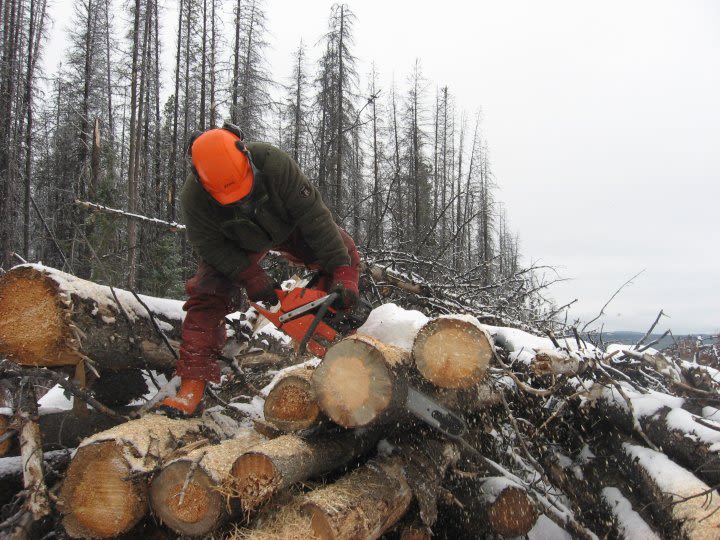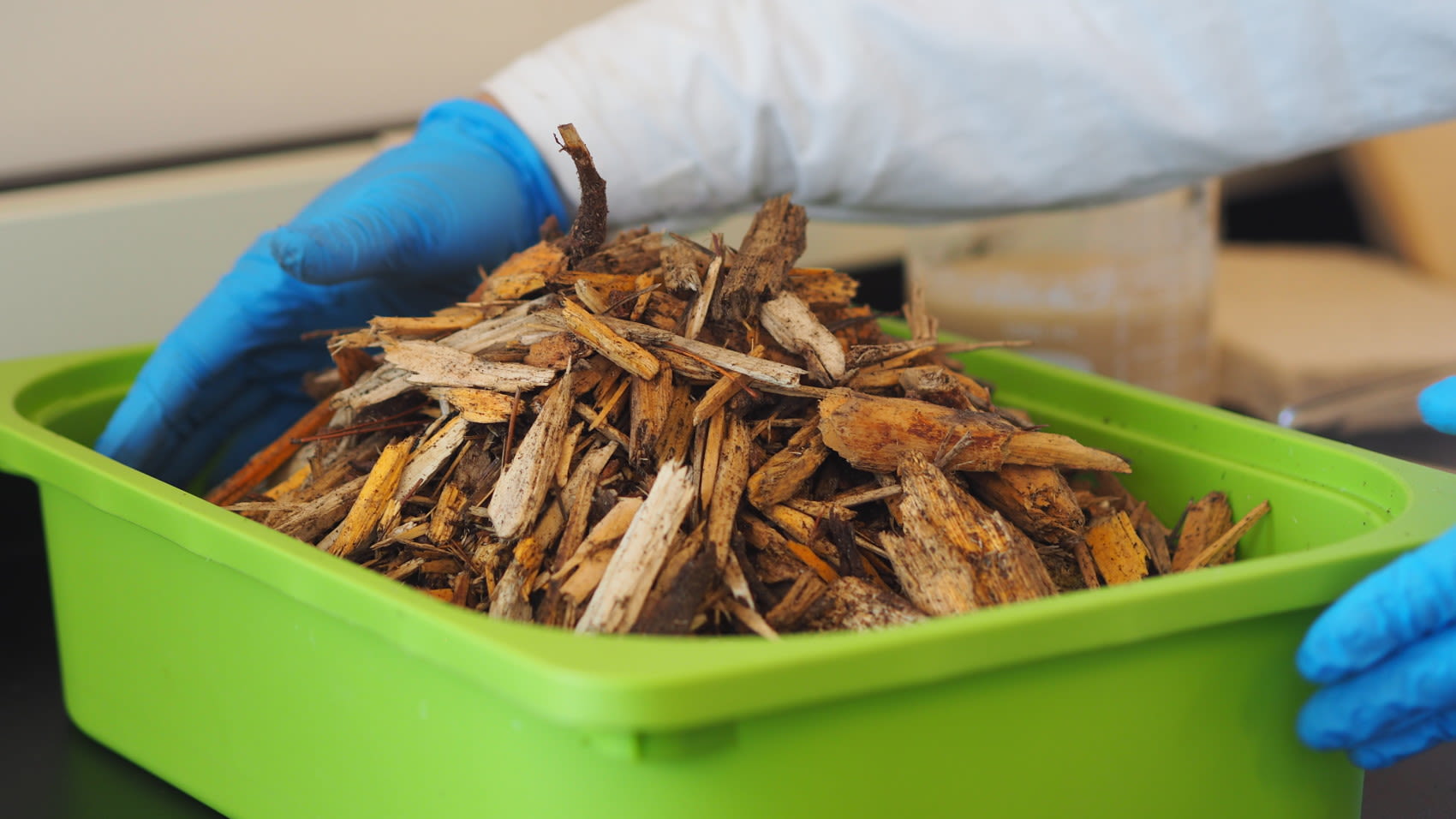Published on Nov. 15, 2022
Isabella O'Malley, M.Env.Sc
WEATHER NETWORK
Researchers have turned waste wood from Wet’suwet’en First Nation into a “biofoam” that can biodegrade within weeks VIDEO
Despite the growing evidence that plastic pollution is extremely hazardous to human health and the environment, landfills continue to grow in size. Up to 30 per cent of global landfills consist of styrofoam, which can take over 500 years to break down.
To address this issue, a collaboration between Wet’suwet’en First Nation and a University of British Columbia (UBC) research team was formed to create an innovative packaging foam made entirely from waste wood.
Despite the growing evidence that plastic pollution is extremely hazardous to human health and the environment, landfills continue to grow in size. Up to 30 per cent of global landfills consist of styrofoam, which can take over 500 years to break down.
To address this issue, a collaboration between Wet’suwet’en First Nation and a University of British Columbia (UBC) research team was formed to create an innovative packaging foam made entirely from waste wood.

Finished biofoams including packing peanuts and other forms. (Lou Bosshart/ UBC)
The inspiration for the “biofoam” came from the need to design alternatives to plastic packaging materials like styrofoam, said Feng Jiang, assistant professor at UBC and the Canada Research Chair in Sustainable Functional Biomaterials, in an interview with The Weather Network.
“Our biofoam breaks down in the soil in a couple of weeks, requires little heat and few chemicals to make, and can be used as a substitute for packaging foams, packing peanuts and even thermal insulation boards,” Jiang stated in the UBC press release.
The waste wood, which is sourced near Burns Lake, B.C., is ground down to its fibres and then constructed into a biodegradable foam that has a similar density and thermal insulating profile to styrofoam.

The inspiration for the “biofoam” came from the need to design alternatives to plastic packaging materials like styrofoam, said Feng Jiang, assistant professor at UBC and the Canada Research Chair in Sustainable Functional Biomaterials, in an interview with The Weather Network.
“Our biofoam breaks down in the soil in a couple of weeks, requires little heat and few chemicals to make, and can be used as a substitute for packaging foams, packing peanuts and even thermal insulation boards,” Jiang stated in the UBC press release.
The waste wood, which is sourced near Burns Lake, B.C., is ground down to its fibres and then constructed into a biodegradable foam that has a similar density and thermal insulating profile to styrofoam.

Gathering wood that will be used to create the biofoam.
(Reg Ogen)
The project was also inspired by a desire to address unsustainable forestry practices. According to Jiang, less than 50 per cent of harvested trees end up being used in the wood industries and the rest is discarded in the forest where it could become a potential fuel for wildfires.
“We were thinking about how we can utilize 100 per cent of the trees instead of just 50 per cent,” explained Jiang.
The project was also inspired by a desire to address unsustainable forestry practices. According to Jiang, less than 50 per cent of harvested trees end up being used in the wood industries and the rest is discarded in the forest where it could become a potential fuel for wildfires.
“We were thinking about how we can utilize 100 per cent of the trees instead of just 50 per cent,” explained Jiang.
The collaboration with Wet’suwet’en First Nation began after Jiang met Reg Ogen and Joe Wong, both who are executives at Yinka Dene Economic Development Limited Partnership Inc., at an event hosted by the Ministry of Forests’ Innovation, Bioeconomy and Indigenous Opportunities Branch.
Ogen, President & CEO of Yinka Dene Economic Development, told The Weather Network that the biofoam is made out of trees from the Nation that were damaged by mountain pine beetles.
“We've been talking about a bioeconomy for six or seven years now. We got an opportunity to work with UBC and, with some provincial grant funding, we're able to put together a program to look at how we can make an idea become a reality,” Ogen told The Weather Network.

Wood waste used to make the biodegradable foam. (Lou Bosshart/ UBC)
Exporting the raw materials for the biofoam will create long-term sustainable job opportunities within the Nation and revenue generated from the project will go towards homes, infrastructure, and language and cultural programs.
“We have an opportunity to really do something neat for our community, province, Canada, and potentially the world,” said Ogen.
The research team states that their collaboration with Wet’suwet’en First Nation is an example of equal and true partnership and hope that they inspire more initiatives like this across Canada. The next steps for the project involve designing a business model and opening a pilot plant in B.C.
“We need to learn from First Nations. We need to see how we can use their wisdom and resources for research and product development,” said Jiang.
“We're really optimistic about where this is going to lead us. I think it's a great opportunity for Indigenous groups to latch on to these types of opportunities that creates change for our Mother Earth,” concluded Ogen.
Thumbnail image: UBC postdoctoral fellow Dr. Yeling Zhu shows samples of the biodegradable foam. (Lou Bosshart/ UBC)
Exporting the raw materials for the biofoam will create long-term sustainable job opportunities within the Nation and revenue generated from the project will go towards homes, infrastructure, and language and cultural programs.
“We have an opportunity to really do something neat for our community, province, Canada, and potentially the world,” said Ogen.
The research team states that their collaboration with Wet’suwet’en First Nation is an example of equal and true partnership and hope that they inspire more initiatives like this across Canada. The next steps for the project involve designing a business model and opening a pilot plant in B.C.
“We need to learn from First Nations. We need to see how we can use their wisdom and resources for research and product development,” said Jiang.
“We're really optimistic about where this is going to lead us. I think it's a great opportunity for Indigenous groups to latch on to these types of opportunities that creates change for our Mother Earth,” concluded Ogen.
Thumbnail image: UBC postdoctoral fellow Dr. Yeling Zhu shows samples of the biodegradable foam. (Lou Bosshart/ UBC)

No comments:
Post a Comment